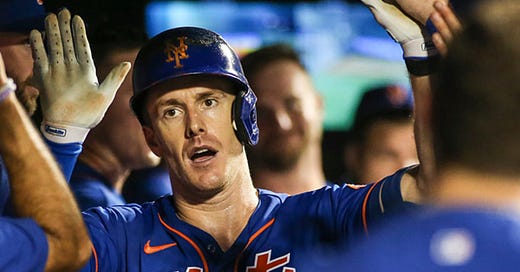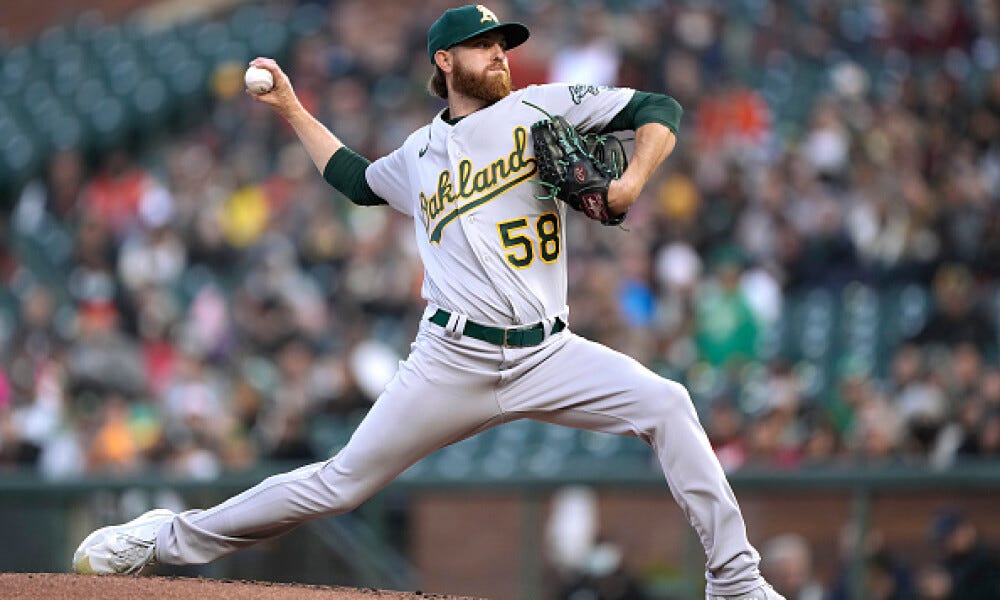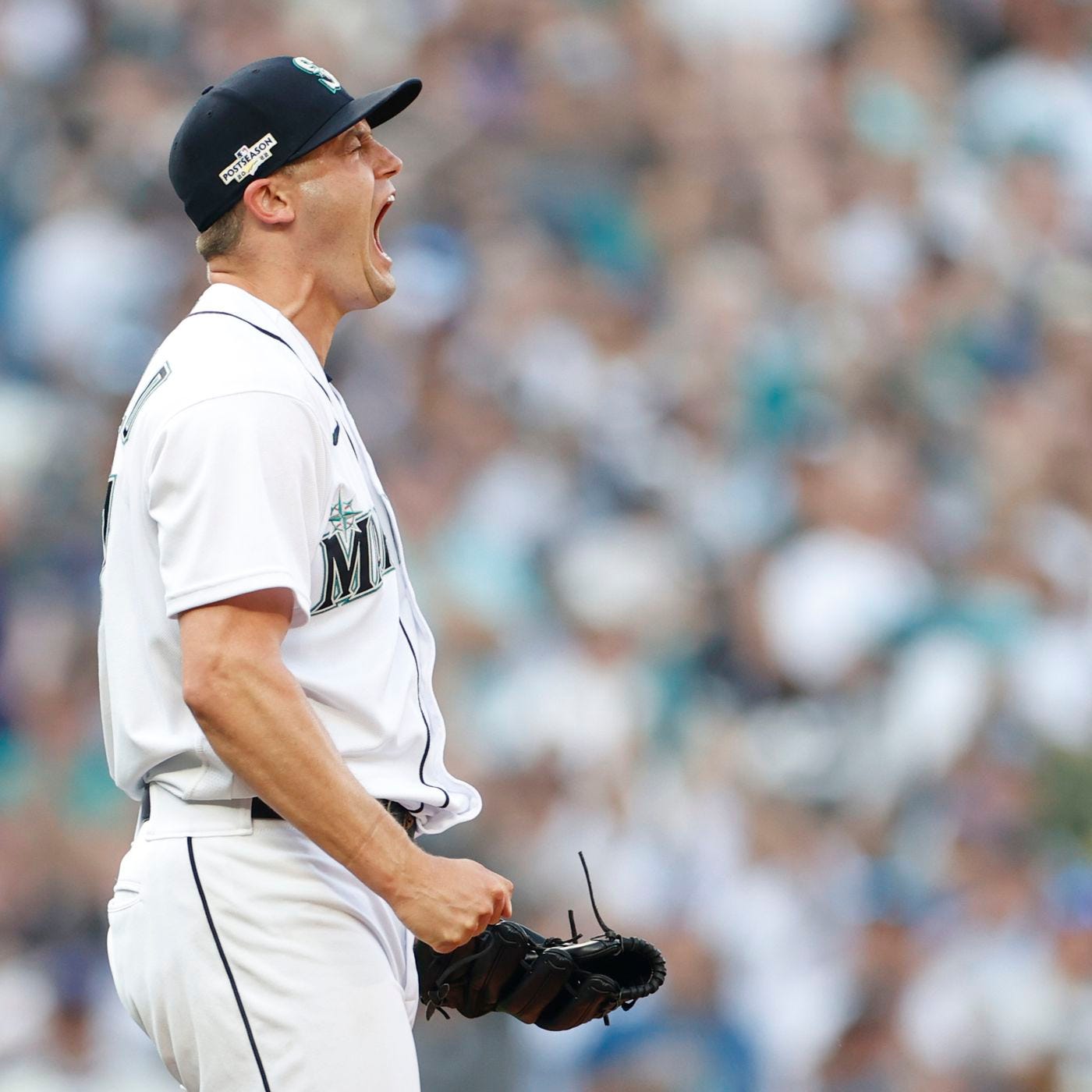Seattle Mariners Trade Deadline Plan: Boring, But Effective
The Seattle Mariners have been a disappointment in 2023, no doubt about it. The trade deadline will be fascinating and they'll need to pick a path, even if it is boring and safe.
We all had higher expectations entering the season. But now, nearly 100 games into the season, the Mariners are what they are: a talented, but underperforming .500 baseball team. But fortunately, or perhaps unfortunately, they find themselves on the fringe of the playoff race, giving the team and its fan base just enough hope that they’re just one good stretch from crashing the playoff party. It puts the front office in a difficult situation of not having a clear path to forge. High-end rentals are certainly out of the question, despite the club’s need for impact. But they can’t exactly ship off every valuable trade chip, just in case the 10 of 12 win streak does come to fruition.
Jerry Dipoto has already hinted that the team will look to buy and sell, adding pieces to the edges of the roster that raise the floor of 2023 and, if possible, the 2024 team. But what can this deadline look like? And can it truly help the ‘23 squad enough to pursue? Let’s take a look at what we’ll call the safety school deadline. A strategy that combines low-cost, low-ceiling upgrades to help sure up some weak spots in the current roster with the possibility of helping nail down some roster openings slated in 2024.
Trade Juan Then and Robert Perez Jr. to the Mets for Mark Canha
Right off the top, I should mention I’m totally guessing at prices. But the point remains the same: Canha shouldn’t cost a ton. He’s still due about $5 million the rest of this year and has a $2 million buyout for his 2024 team option. That salary alone will scare off some teams. But for the Mariners, Canha is a pretty easy fit and his remaining 2023 salary and the $11.5 million 2024 option shouldn’t be much of a problem either.
Canha is currently having a pretty normal season by his standards. He’s getting on base (.342 OBP), drawing walks (10.5%, 73rd percentile), avoiding strikeouts (17.3%, 78th percentile), and playing average corner outfield defense while hitting a respectable .241. Canha’s slash line is never going to wow anybody and he lacks the home run power you’d prefer from a corner bat, but Canha is solid against lefties and righties, has a history of performing in T-Mobile, and is currently posting a rock solid 111 wRC+. And with the injury to Kelenic, Seattle needs an everyday option added to their lineup.
I’m not telling you to get excited about a Mark Canha trade, but the 34-year-old can still hit, fills a need for 2023, is under contract at a reasonable number for 2024, and fills an obvious need over the next two years. Canha is a good, albeit boring, addition to most clubs, but Seattle should jump at the idea of acquiring him at the right cost.
Mariners Trade Jean Munoz, Taylor Trammell, and Michael Morales to Oakland for Seth Brown and Paul Blackburn
So this one may surprise some, mostly because the standard numbers will tell you neither Blackburn nor Brown are that good. But if you dig a little deeper, both make some sense. We’ll start with Blackburn, as he’s a more obvious case. While he currently sports a 5.48 ERA, Blackburn’s underlying numbers are quite good, posting a solid 3.72 FIP, a 4.31 xFIP, 9.28 K/9, and a 3.16 BB/9. Blackburn has thrived at avoiding hard contact this year and is setting a new career high in strikeouts thanks largely to his slider.
He’s got 2 more seasons of arbitration before free agency, and while his ceiling is that of a #4, Seattle will need an arm to make it through the rest of 2023. And with the dubious update on Marco Gonzales and Ray being out for at least half of 2024, collecting solid rotation depth isn’t a bad idea.
Brown is a tougher sell. Objectively, he’s been bad in 2023 and is a strict platoon bat with legitimate questions surrounding the hit tool. He’s 31 years old by will have three more seasons of club control after 2023. He is, in many ways, the opposite of Mark Canha. Brown is a left-handed hitter who does strikeout and squeezes most of his value from his towering home run power.
The fascination with Brown stems from a monstrous post-ASB performance last year, in which Brown slashed .249/.348/.507 with 15 homers in 250 PAs. Coupled with a ridiculous 12.8% BB rate, Brown posted a 148 wRC+ in half a season’s worth of ABs.
But Seattle could use some more left-handed thump in this lineup and if Brown can get back to his second-half performance of 2022, he could be a legitimate option at first base, DH, or a corner outfield spot going forward. The power profiles well in Seattle and if the club believes Brown can get back to his 117 wRC+ in 2022, he could be a tremendous bargain. And hey, getting out of Oakland has to help… right?
Trade Paul Sewald and Tom Murphy to Miami for Xavier Edwards and Jake Eder
Not even gonna lie, lifted this one straight from Joe Doyle. But it does make a good amount of sense, doesn’t it? The Marlins are one of the more surprising contenders this season and they’ve indicated they’ll absolutely look to buy over the next two weeks. Miami has a solid bullpen already, but adding backend options is never a bad idea for playoff-bound teams. Sewald continues to be one of the more underrated relievers in baseball and fits well on any roster.
Some might be surprised by Murphy’s inclusion in this deal, but Miami desperately needs help at catcher. Marlins’ backstops are currently hitting .205/.271/.278, good for a 55 wRC+. Murphy represents a massive upgrade for Miami.
Unlike the first two moves, this is a pure sell job and the market favors sellers this season. For Seattle to kick two highly respected members of their clubhouse to Miami, they’ll need to add legitimate pieces. Xavier Edwards would give Seattle a chance at an everyday second baseman, and the Mariners would basically have two months to audition Edwards with everyday ABs.
While he’s likely more of a bench piece, Edwards has crushed the upper minors, has a small track record of MLB success, possesses plus speed, and knows how to make the most of his tools.
The potential prize of this deal is Jake Eder. It’s been a slow build for Eder after Tommy John surgery late in 2021 derailed his promising start to his pro career, costing him all of 2022. He’s working his way back in AA, but progress has been slow. At his best, he’s a well-built lefty with a double-plus slider and a 55-60 grade fastball. Eder has really struggled with walks, which isn’t unusual in the first year back from injury.
Miami would probably like to hang onto Eder, but he’ll turn 25 in October, is Rule 5 eligible in December, isn’t ready for the challenge of the big leagues, and Miami has collected a nice group of young, talented arms. It might be aiming too high for Sewald, but it’s certainly not a ridiculous ask for Seattle.
Eder would become the top pitching prospect in the Mariners’ system and could even be used to help the Mariners secure a bat this winter. But Seattle could help Eder through his rehab and secure a legitimate middle-of-the-rotation option if they’re willing to be patient. Seattle has used 40-man spots to protect players much further away from the bigs than Eder and isn’t facing any 40-man problems for the forseeable future.
While none of these moves are all that exciting, it does give Seattle a legitimate opportunity to sure up some of the weak points of their roster heading into 2024 and may not greatly impact their odds of securing the third wild card in 2024 either. The lineup could look something like this (platoon partner vs LHP in paranthesis).
J.P. Crawford SS
Julio Rodriguez CF
Teoscar Hernandez RF/DH
Eugenio Suarez 3B
Seth Brown (Dylan Moore) DH
Mark Canha LF/DH
Cal Raleigh C
Ty France 1B
Xavier Edwards (Jose Caballero) 2B
This plan may actually help your playoff odds in 2023 by raising the floor and doesn’t empty the coffers before this winter when you’ll need to make additional moves. None of these moves carry significant payroll implications into the winter, yet all the players are club controlled. It’s not exciting, but it can all make sense and leave your roster in a better place both in the short and long-term. And isn’t that what the front office wants?





